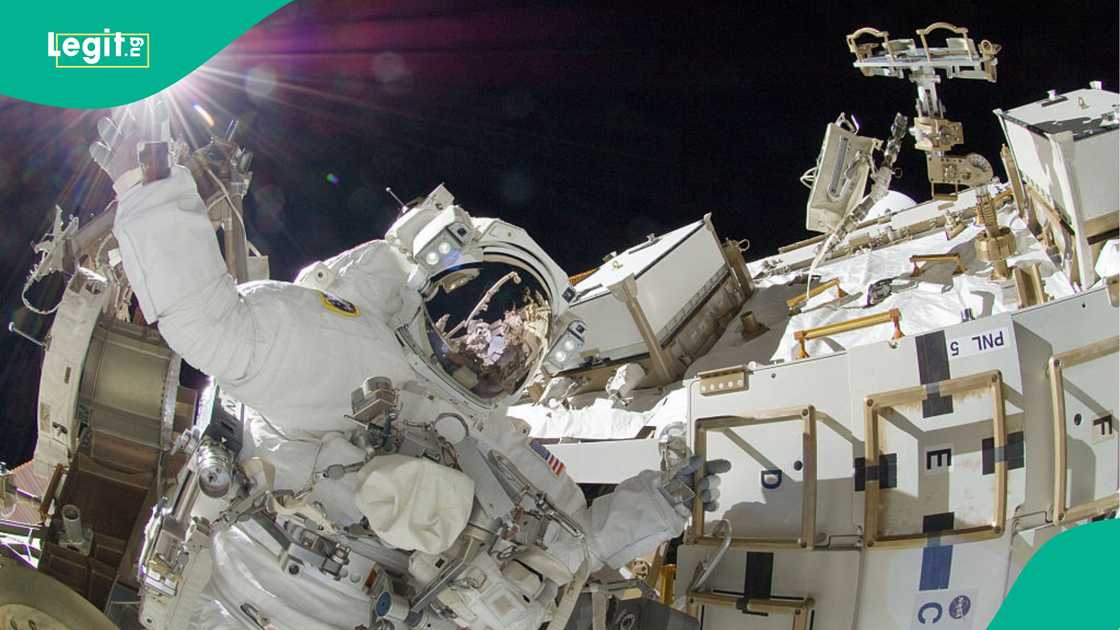NASA Mentions Actual Distance Between Moon and Earth, Explains How It Shapes Ocean Tides
- The moon’s distance from Earth constantly shifts, influencing ocean tides and the grandeur of solar eclipses
- At times, it appeared closer and brighter, creating stunning supermoons, while at other moments, its farther position gave rise to breathtaking annular eclipses
- Throughout history, various space missions showcased the fascinating journey to reach our celestial neighbour, each revealing unique insights into the Earth-Moon system
The moon stood out as the brightest object in the night sky, but its distance from Earth played a crucial role in shaping ocean tides and solar eclipses.
On average, our planet's only natural satellite remained approximately 238,855 miles (384,400 kilometres) away, according to NASA.

Source: Getty Images
However, the moon’s orbit was not a perfect circle, meaning its distance varied throughout its journey.
The closest point in its orbit, known as perigee, brought it roughly 226,000 miles (363,300 km) from Earth. If perigee coincided with a full moon, it resulted in a supermoon, a term widely used by skywatchers.
Supermoons appeared around 17% larger and 30% brighter than the faintest moon of the year. Additionally, the moon’s gravitational pull, particularly at perigee, triggered higher tides than usual.
Moon’s distance at Apogee
At its farthest distance, known as apogee, the moon was situated about 251,000 miles (405,500 km) away from Earth.
One of the most striking phenomena associated with apogee was the annular solar eclipse, often referred to as the “ring of fire” eclipse.
The serendipity of solar eclipses lay in the perfect proportions of celestial distances. For the next 600 million years, the moon’s proximity to Earth remained about 400 times greater than the sun’s distance.
Remarkably, the sun’s diameter was also roughly 400 times larger than the moon’s, causing their disks to match almost perfectly during solar eclipses.
This alignment created brief moments of totality, where only the solar corona shimmered behind the moon.
However, when a new moon phase coincided with apogee, the moon’s smaller apparent size in the sky resulted in annular eclipses rather than total ones.
These eclipses still offered a spectacular view, with a ring of the sun’s disk visible to observers.
Time it takes to reach the moon
The journey to the moon depended on several factors, such as whether the spacecraft carried passengers or flew past without stopping.
The Soviet Union launched Luna 1 in 1959, marking the first moon mission. With no propulsion system, the spherical satellite was propelled into space, reaching its target in just 34 hours before continuing its orbit around the sun.
This remained one of the fastest moon journeys.
In contrast, in 2003, the European Space Agency launched SMART-1, the first successful European spacecraft to reach the moon. Instead of following a direct path, SMART-1 used a spiral trajectory around Earth, arriving more than a year after launch.
The spacecraft employed an ion engine alongside gravity assist manoeuvres, making it an exceptionally fuel-efficient mission.
Despite the extended timeline, SMART-1 provided invaluable insight into the Earth-moon system and its dynamics.

Read also
After 45 years, recording in airplane captures pilot’s final words before crash that killed 146
The moon’s varying distance continued to shape natural events on Earth, affecting everything from tidal movements to celestial phenomena.
With its gravitational influence and breathtaking eclipses, the moon remained an awe-inspiring presence in the sky.

Source: Getty Images
New Earth with conditions suitable for people found
Legit.ng earlier reported that in a finding published in the journal Astronomy & Astrophysics recently, a 'super-Earth' planet was found outside of the solar system that could have conditions suitable for life.
According to experts at the University of Oxford, the planet known as HD 20794 d has a mass six times greater than Earth's and orbits within the 'habitable zone' of a star similar to the sun.
Source: Legit.ng




